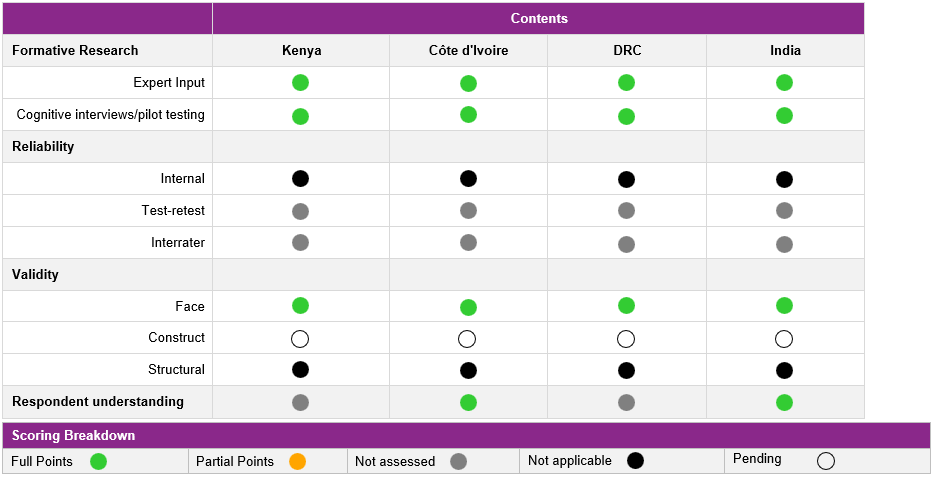Improving women’s decision-making power is crucial for advancing gender equality and is most commonly measured by asking respondents who usually makes decisions over a standard set of domains (e.g., major household purchases, children’s education, health, how earned money is used, etc.). However, interpreting being a decision maker as a proxy of empowerment is only valid if the respondent desires to be involved in the decision. It is not hard to imagine situations in which not being a decision maker reflects an individual acting on their own desires. Understanding preferences and mechanisms behind desired non-involvement provides critical information to inform global initiatives designed to promote women’s decision-making power and agency. This module aims to capture whether respondents want to be involved in the decisions they are part of and those they are not part of, as well as the reasons for which they might not want to be involved. Other variables you may want to collect alongside this module include marital status and age.
Link to: tool content and guidelines, CTO file, and statistical annex
Duration: This tool takes on average 4.81 minutes to be implemented.
Permitted use of the tool: all users are free to use the tool with citation: “MAGNET (2023). Preferences over Decision-making. https://magnet.ifpri.info/preferences-over-decision-making/”
Tool sample
- Currently, I am involved in making decisions about when and where I can work.
- Yes
- No
- I would like to be involved in making decisions about when and where I can work.
- Yes (Skip to next decision topic)
- No
- What are the reasons why you don’t want to be involved in making this decision? (Select all that apply)
- I do not have the time to make this decision
- I do not have the mental space to take on making this decision
- I am simply not interested in making this decision
- I would prefer another household member to have the responsibility of this decision so I do not get blamed if the decision is regretted
Measurement properties
- Geographies Tested: Kenya, Côte d'Ivoire, Democratic Republic of the Congo, India
- Populations included: Female, Male
- Age range: Adults
For details on these testing metrics, visit our scoring methodology page.

 International Food Policy Research Institute
International Food Policy Research Institute